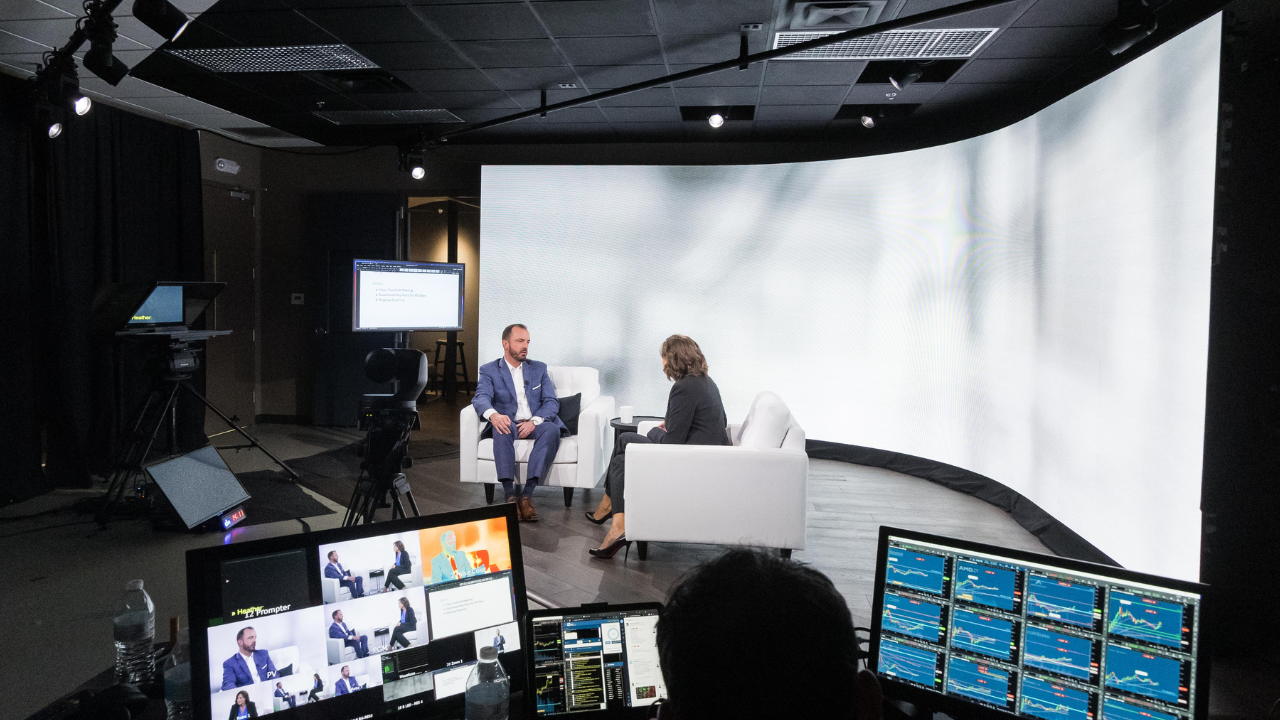5 Lessons We’ve Learned From 38 Years of Church AVL Integration
Published on: Tuesday, March 15, 2022 - 7:00am

When it comes to church AVL integration, CTS has seen a lot.
Over the course of more than 38 years, we’ve worked with churches of all shapes and sizes — from brand new congregations needing portable solutions to well-established megachurches with sophisticated needs. We’ve worked with technology and acoustic budgets ranging from tens of thousands to multiple millions of dollars.
And as you might guess, we’ve learned some lessons along the way. Below, we’ll share five big lessons we’ve learned through nearly four decades of experience working with churches on their AVL integration projects.
1. Get Involved Early
It’s possible for an AVL provider to take an order with little involvement in the project, show up, perform the install, and leave. Sometimes, on the face of it, this even sounds good because the turnaround timeline sounds and feels so fast.
But one of the biggest lessons we’ve learned over many years of integrating AVL is the importance of engaging early in the construction process.
We’ve had clients and other industry professionals ask why our timeline is longer than others. It’s because we value being involved early and deeply in the AVL integration process. We’re not just making a quick systems sale and washing our hands. We’re establishing a relationship with a client that we want to continue to support for the long term.
When a company builds their model around shorter timelines, so much value gets lost — value that we really care about providing.
By being involved from the very beginning of the an AVL integration process, we’re able to help clients work through and navigate all the early exploratory decisions that impact technology systems. We’re able to help work through things like finishes, wall locations, layouts — everything down to the building itself. We’re able to work fluidly not only with the client but also with the architects and general contractors from the very front end of their process.
If we were just looking to sell a system, we could come in at any time. But by coming into the process early, we’re better able to set up a church for long-term success in managing high-value systems. We build a platform that the client can have faith in, one that will grow with them and allow simple and efficient additions in the future.
2. Establish a Master Plan Approach
Another lesson we’ve learned about AVL integration is the importance of helping our clients establish a master plan approach for their AVL solutions, regardless of budget. In other words, churches need to plan for where they’re going, not just for where they are today.
For example, before the pandemic, thousands of churches across the country weren’t working with fully developed video systems or streaming their content to the web. They’d never felt the need to before. But as soon as lockdown happened, they realized that they had no choice but to start streaming in order to connect with their congregations.
Because of our involvement in so many projects and renovations, (AVL integration and otherwise) throughout decades of change, we have experience looking forward and seeing where churches will want room to grow in the future. We want to provide systems that will grow with the church and provide usefulness and flexibility for many years.
The master plan approach helps explore the path to growth and expansion rather than tying you specifically to what’s happening today. The master plan approach takes a long-term view that’s vital to the extended success of a church’s current AVL installation project.
3. Documentation Matters
Documentation is one of those things that companies can let slip if they don’t realize its value. They could push quickly through design with loose or generic drawings that leave a lot of gray areas and confusion in their wake. This leaves the client unsure of exactly what they can expect from the project, and it can lead to dissatisfaction — and even conflict — down the line.
Instead, including detailed documentation as an integral part of the process — like client-reviewed drawings and as-built drawings — helps to clearly define the scope of the work, avoid costly mistakes, and avert frustration. It also keeps accurate records for the future to assist with any ongoing maintenance, future projects, etc.
4. Maintain Higher Quality Standards
Quality matters, and you shouldn’t have to apologize for that. Sometimes we run into questions from other industry professionals that sound something like this:
Why do you do it this way? It just seems to take longer.
The answer is that what we do lasts. The systems we install must remain viable, functional, and stable for many years. We’re not interested in quick work at a lower quality.
On a rather consistent basis, clients bring us in to fix problems with systems that other companies have installed. Sometimes it’s due to failures in stability, functionality, or technical support efforts. But whatever the cause, these problems often happen more quickly than they should.
Furthermore, it is vital that we continue to learn and improve. It goes without saying that the technology industry changes at an incredible pace. It’s important to stay open to these changes and be willing to evaluate areas where new methods truly do bring improvement, as well as the areas where change only brings higher risk. From there we lean on our experience to determine the best path forward.
Through the years, we have learned and will continue to learn how to give our clients a higher standard of quality in their systems that will sustain them better for far longer. We take our time and don’t cut corners because we know that’s more costly to an AVL integration project in the long run.
5. Invest in First-Use Support
Finally, we’ve learned the value of providing hands-on support to clients during the first use of their new systems.
We know how important that first Sunday in a new building or with new systems is. Construction and renovations are costly, and the congregation has placed its trust in the church leadership to handle the project responsibly.
If a congregation has committed to supporting a multimillion dollar building campaign, they have some expectations on the first Sunday of services. But if there’s feedback in the new PA and the systems seem like they’re falling apart, people start to wonder what all that money really accomplished. Fair or not, something as simple as this can cause a congregation to lose trust in leadership, and that’s not easy to get back.
This is why we provide first-use support. We have technicians on site for the first use of new systems, operating the systems themselves and/or watching the backs of the church’s operators as they work.
So while perfection is a high bar, we aim for our model, systems, and solutions to have the highest level of success for clients during the first use and beyond. Because, honestly, one of the greatest joys of the work we do is enjoying the end result of years of work by being with our clients as they experience an incredible first worship service in their new space.
Plan With These Lessons in Mind
These five lessons are some of the key concepts we’ve learned through many years of experience in AVL installation projects. They’ve helped us take AVL integration to the next level, and we hope they help you as you’re planning your next project.



